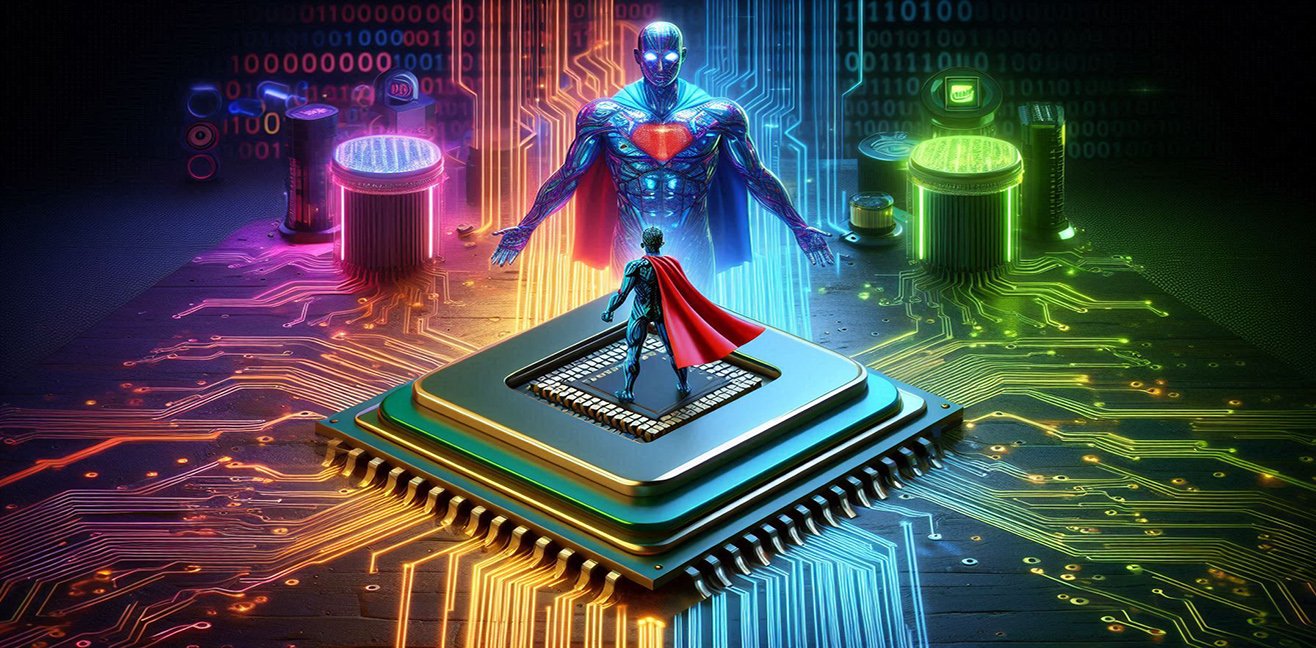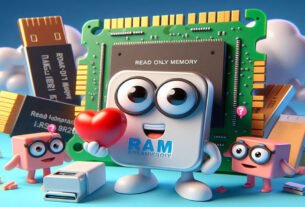There was a time when booting up your computer felt like waking up a sleepy person in the morning.
“Let me have my coffee first, then I’ll get to it.” ☕
Then came the SSD, and everything changed.
Now it’s not your computer that’s slow — it’s you during startup! 😅
So what’s behind this miracle speed?
Let’s take a fun, engineer-approved deep dive into the inner world of SSDs! 🔍⚡
🚀 1. What Is an SSD and How Does It Work?
The SSD (Solid State Drive) — as its name suggests — is a “motionless hero.”
No spinning disks, no reading arms — just pure electronic magic stored in NAND Flash memory chips.
Data isn’t physically “read” like on an HDD; instead, it travels through electrical signals between transistors.
In a way, the SSD is like your computer’s nervous system — it reacts instantly. ⚡
Technical summary:
- Data is stored in cells inside NAND flash memory.
- A controller (think of it as the brain) manages where each cell is and how data is read and written.
- This architecture eliminates mechanical latency → and that’s where the real speed comes from. 🚀
🧠 2. Types of SSDs: “Not All Speed Is Created Equal!”
Not all SSDs are born equal, my love 💅
Some fly at light speed, others are just… “fast enough, don’t push it.” 😏
🔹 SATA SSD
- The most common and budget-friendly type.
- Max speed: around 550 MB/s.
- About 5–6× faster than a classic HDD.
- Usually used in older laptops.
🧩 Pro tip: Models like Crucial MX500 or Samsung 870 EVO are reliable and durable.
🔹 NVMe SSD (PCIe)
- Here’s where things go supersonic. ✈️
- Max speed: 3500 MB/s – 7000 MB/s (some even hit 14,000 MB/s!)
- Installed into your motherboard’s M.2 slot.
- Comes in PCIe 3.0, 4.0, and 5.0 versions — each one a different speed league.
🧠 Tip: If your motherboard supports PCIe 4.0, go for Samsung 980 PRO or WD Black SN850X — you’ll enter another dimension.
🔹 NVMe vs SATA
- SATA = “A Ferrari engine in city traffic.” 🚗
- NVMe = “A Ferrari engine on the highway.” 🏎️
🔬 3. The Technical Deep Dive: Why Is SSD So Fast?
This part is a bit technical, but don’t worry baby — no coffee refill needed ☕💋
In SSDs, data access happens inside NAND Flash memory chips.
Each NAND cell stores an electrical charge representing a “0” or a “1.”
Types of NAND:
| Type | Bits per Cell | Speed | Endurance | Description |
|---|---|---|---|---|
| SLC | 1 | ⚡⚡⚡ | 💪💪💪 | Used in enterprise systems, very expensive. |
| MLC | 2 | ⚡⚡ | 💪💪 | Balanced model. |
| TLC | 3 | ⚡ | 💪 | Most common in modern SSDs. |
| QLC | 4 | ⚡ | 🧁 | Cheaper, less durable but higher capacity. |
🧩 Tip: Use TLC for your system drive. QLC is better for archival storage.
⚙️ 4. Real-World Performance Difference
💻 Boot Time:
- HDD: 45–90 seconds
- SSD: 7–10 seconds (You won’t even finish your coffee before the desktop appears!)
📂 File Transfer:
- HDD: 100 MB/s
- SATA SSD: 500 MB/s
- NVMe SSD: 3500 MB/s
So, a 10 GB file? 100 seconds on HDD → only 3 seconds on SSD! 🤯
🔄 Apps & Games:
- Programs like Photoshop, Premiere, and AutoCAD open 2–3× faster.
- Game loading screens? Practically disappear. 🎮
🧰 5. Practical Tips When Installing an SSD
🔧 1. Check Motherboard Compatibility
- Older systems may lack an M.2 slot → choose SATA SSD instead.
- Make sure AHCI Mode is enabled in BIOS for full speed.
💽 2. Cloning (Data Migration)
- Use tools like Macrium Reflect, Acronis True Image, or Samsung Data Migration to clone your old drive.
- No need to reinstall Windows — smooth transition guaranteed. 💾✨
🔥 3. Enable TRIM
- TRIM helps SSDs clean up and maintain performance.
- Check TRIM status in Windows:
fsutil behavior query DisableDeleteNotifyIf the result is 0, TRIM is active.
🧊 4. Keep an Eye on Temperature
- NVMe SSDs can get hot under heavy load.
- Above 70°C, performance may throttle.
- Adding a heatsink extends lifespan.
🪫 5. Don’t Fill It Up Completely!
- Keep at least 20% free space for best performance.
- SSDs need breathing room for “garbage collection.”
🔮 6. SSD Lifespan
SSD lifespan is measured by TBW (Terabytes Written) — how much total data can be written.
Example:
- 500 GB SSD → about 300 TBW
That means even if you write 50 GB every day, it’ll last over 16 years! 😍
🧠 Tip: Monitor health with CrystalDiskInfo or Hard Disk Sentinel.
💡 7. Golden Rules for SSD Usage
- Never Defragment! ❌
It’s useful for HDDs but harmful for SSDs. - Don’t disable Fast Startup — Windows uses it efficiently with SSDs.
- Keep firmware updated — manufacturers release performance updates.
- Always back up!
SSDs are fast, not infallible — with great speed comes great responsibility 😉
🧭 8. What to Look for When Buying an SSD
| Feature | Description | Recommendation |
|---|---|---|
| Capacity | 500 GB or 1 TB | 500 GB ideal for system drive |
| Interface | SATA / NVMe | Choose NVMe if M.2 slot available |
| Endurance | High TBW | Minimum 150 TBW |
| NAND Type | TLC preferred | Better longevity & stable speed |
| DRAM Cache | Yes, please | DRAM-less drives slow down |
💬 Final Words
Installing an SSD isn’t just an upgrade —
it’s giving your computer a second youth, or maybe a Red Bull-fueled morning energy boost. ☕⚡
Now instead of saying “Come on, boot already,”
you’re saying,
“Catch me if you can!” 😎
At that moment…
Your computer stops being a slow machine and becomes your speedy, loyal teammate. 💻❤️




